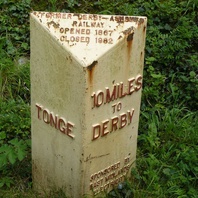
Viking Names
Derby
Derby, in the Morleyston and Litchurch Hundred of Derbyshire, is the only one of the Five Boroughs of the Danelaw to bear a Scandinavian name. It is also one of the few instances of a Scandinavian-named place for which we have an earlier English name. The English name is Norðworðig from the Old English elements norð ‘north’ and worðig ‘enclosure’. This is possibly related to Derby’s position, slightly north-east of Tamworth and that the enclosure’s northernness is relative to the ancient capital of Mercia. In standard reference books the name Derby is explained as Djúrabý, comprising Old Norse djúr ‘deer’ and by ‘farm, settlement’. Furthermore the compound recurs in the British Isles, and probably refers to a particular function – djúrabý ‘specialised production units that had earlier formed parts of multiple estates’. However, the first element of the name probably has a completely different derivation based on its location on the River Derwent, whose name is pre-English in origin. The form of the river-name in the Anglo-Saxon period was Deorwente. Scandinavian settlers hearing this river-name could have associated the first element deor with the familiar compound djúrabý, or indirectly adapted the Romano-British settlement name Derventio. It is certainly possible that the Romano-British name continued in use to refer to the fortified area in the Anglo-Saxon period. Mint-signatures from Derby point to the likelihood not only that Deoraby originally referred specifically to the area of the Roman fort, but also that it is a Scandinavianisation of a pre-existing name of British origin used by the Anglo-Saxons.
Read More
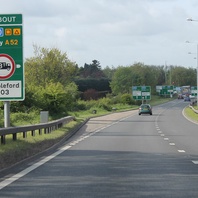
Viking Names
Toton
The name of Toton, in the Broxtow Wapentake of Nottinghamshire, comes from the Old Norse male personal name Tófi and the Old English element tun ‘farm, settlement’. It is thus a hybrid name, like others in the region. There are several examples in the Trent valley such as Gonalston or Rolleston. Such names are often called Grimston-hybrids, but the late Kenneth Cameron, formerly professor at the University of Nottingham, always preferred the term Toton-hybrids, since the element ‘Grim’ does not always derive from an Old Norse personal name.
Read More
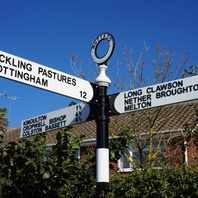
Viking Names
Colston Bassett
Colston, in the Bingham Wapentake of Nottinghamshire, comes from the Old Norse male personal name Kolr and the Old English element tun ‘farm, settlement’. It is thus a hybrid name like others nearby, such as Thoroton and Aslockton. Bassett was added in the twelfth or thirteenth century from the name of an owner of the manor. Such suffixes were used to distinguish this Colston from Car Colston, some eight miles to the north of Colston Bassett.
Read More
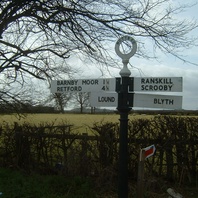
Viking Names
Scrooby
The name of Scrooby probably comes from the Old Norse female personal name Skroppa and the Old Norse element by ‘farm, settlement’.
Read More
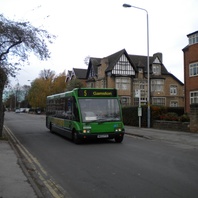
Viking Names
Gamston
Gamston, in the Bassetlaw Wapentake of Nottinghamshire, is a hybrid name from the Old Norse male personal name Gamall and Old English tun ‘an enclosure; a farmstead; a village; an estate’.
Read More
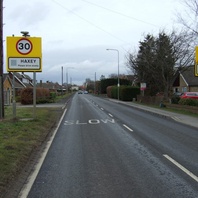
Viking Names
Haxey
Haxey, in the West Riding of Lindsey in Lincolnshire comes from the Old Norse male personal name Haki and Old Norse ey ‘an island’ or Old English eg ‘an island or well-watered land’ which most frequently refers to dry ground surrounded by marsh. The place-name aptly describes the location as Haxey sits on a low-lying hill surrounded marshland.
Read More

Viking Names
Clipstone
Clipstone, in the Bassetlaw Wapentake of Nottinghamshire, is a hybrid name. The first element is the Old Norse male personal name Klyppr as in Clipston, Northamptonshire, and Clipston on the Wolds, Nottinghamshire. It is on record as Clip, the name of a tenth-century moneyer. The second element is Olclid English tun ‘ enclosure; a farmstead; a village; an estate’ and it is thus another hybrid name.
Read More
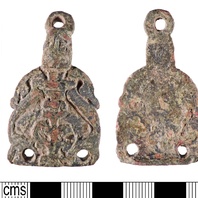
Viking Objects
Stirrup-Strap Mount (LIN-D274D5)
This Anglo-Scandinavian cast copper-alloy stirrup-strap mount is decorated with zoomorphic ornamentation. It has been classified as a William Class A Type 6 mount.
Read More
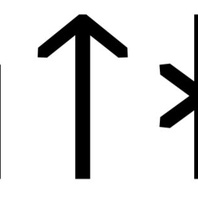
Viking Names
Frosthild
The postulated name Frosthildr may be an Anglo-Scandinavian formation as it is only attested in the minor place-name of Throstle Hill, West Yorkshire. It is an Old Norse compound formed from Frost- ‘frost’ and -hildr ‘battle’.
Read More
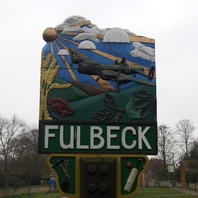
Viking Names
Fulbeck
Fulbeck, in the Loveden Wapentake of Lincolnshire, is an Anglo-Scandinavian hybrid formed from Old English fūl ‘foul, dirty’ and Old Norse bekkr ‘stream, a beck’, which likely replaced Old English broc, ‘brook’ based on earlier forms of the place-name.
